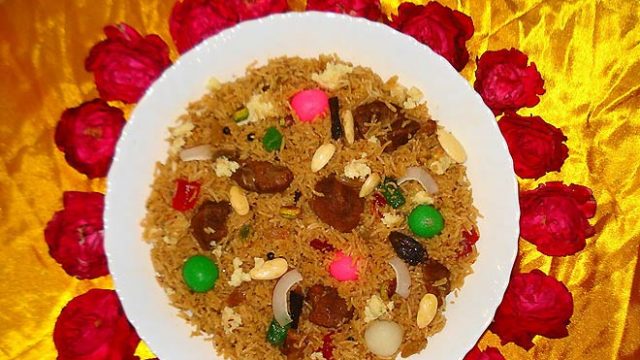It’s hard to write with any degree of authority about food that one has resolutely refused to consume, but it is possible to write about such foods with a great deal of feeling. Take Mutanjan Pulao for example. Two generations ago (I’m told) it was considered a fancy, party dessert—served at weddings and other feasts. It’s certainly all about excess. The best quality Basmati rice, desi ghee, mutton or chickens, plenty of dry fruits, lots of khoya and lots of sugar. A sweet, sticky, rich pulao, not to be confused with zarda or meethe chawal. It’s right there, larger than life in a recent translation of a Persian manuscript called the Nuskha-e-Shahjahani, a list of pulao recipes from the royal kitchens of Emperor Shahjahan himself. If it was good enough for Shahjahan, I suppose it should have been good enough for me. But it wasn’t. Sweet meat…er, no thank you. My grandmother tried to make it seem exotic and edible—part of our Indo-Iranian gastronomic history. Didn’t work. Many childhood Eids were spent in worried anticipation and even today the very thought gives me a stomach ache. It’s a bit like eating idlis with jam or gulab jamuns with ketchup—other people can enjoy their weird food but when I feel like meat I’ll take my chances with Yakhni Pulao and if I absolutely must have sweet rice, then zarda it will be. But if you have a seer of rice, a seer of sugar and a seer of mutton just sitting around, you could bung them all together and see what it’s all about.
Mutanjan pulao
Sweet pulao made of rice, meat, dried fruits and sugar--Emperor Shahjahan liked it. See if you do too.

Mutanjan pulao
Mutanjan pulao



